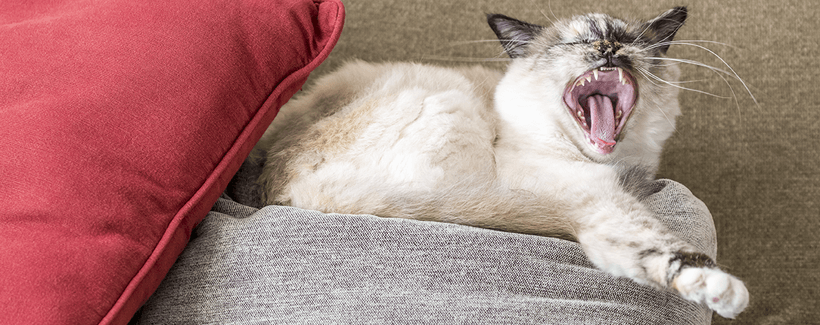Haemobartonellosis in Cats
Haemobartonellosis is also known as feline infectious anemia or feline hemotropic mycoplasmosis. It is a tick transmitted (and sometimes flea transmitted) disease. Haemobartonellosis targets the red blood cells which are responsible for carrying oxygen.
What causes haemobartonellosis?
Haemobartonellosis in cats is caused by Mycoplasma haemofelis formerly known as Haemobartonella felis. Cats may also become infected with another organism called M. haemominutum but it is less likely to cause disease. Both are not typical bacteria but belong to a group of microorganisms called mycoplasma which are the smallest free-living type of ‘germs.’ Both M. haemofelis and M. haemominutum are termed “hemotropic mycoplasmas” or “hemoplasmas” because they are blood-(hemo) associated-(tropic).
How are M. haemofelis and M. haemominutum transmitted?
Fleas and ticks become infected with mycoplasma by feeding on an infected animal. When the flea or tick then feeds on another animal the mycoplasma are passed on. Because they live in the blood cells they could be spread via a blood transfusion from an infected animal to a non-infected one. In the cat the mycoplasma can also be spread from the mother cat to her kittens. They may also be spread through cat bites – male cats, cats that roam, and cats less than 4-6 years of age appear to be at higher risk of becoming infected.
What are the signs of haemobartonellosis in cats?
In the cat the disease can vary from being very mild with no symptoms or only a slight anemia to a disease that is very severe. Signs often include depression, loss of appetite, and dehydration. If severe, anemia could result in weight loss, pale mucous membranes, weakness, fast heart and respiratory rates, jaundice, and death. Some owners report their cats start eating litter or dirt. Cats that are infected with Feline Leukemia Virus (FeLV) are more likely to have severe disease. Without therapy some cats with haemobartonellosis die from the severe anemia.
Some cats can recover from the disease but become carriers of the organism. This means the cats look healthy but still have small numbers of mycoplasma in their bodies. If these cats are stressed it sometimes causes the organisms to multiply and produce disease.
Related Article: 10 Things You May Not Know About Cats >>
How is haemobartonellosis diagnosed?
Sometimes the organism can be seen inside cells on a blood smear. To find them a small drop of blood is spread over a microscope slide stained and examined under the microscope. The number of organisms in the bloodstream can fluctuate dramatically. There can be many observed in one sample and a sample taken two hours later may reveal none. A polymerase chain reaction (PCR) blood test to detect these hemotropic mycoplasmas in cats is available.
How is haemobartonellosis treated?
Antibiotics such as tetracycline, oxytetracycline, or doxycycline are given for three weeks. Although it may seem contradictory in cats with a rapid course of disease, large doses of prednisone may sometimes be given to suppress the destruction of the red blood cells by the body. In some animals it is necessary to give one or more blood transfusions.
How is haemobartonellosis prevented?
As with other diseases transmitted by fleas or ticks, control of the pests is the foundation of prevention. Products which repel and kill ticks and fleas such as Bio Spot, Frontline Flea Tick, Program Flavor Tabs, or Advantage Plus (or other products containing pyrethrin) are excellent choices. Keeping cats indoors will likely prevent infection.
Can people get haemobartonellosis?
There have been no reported cases of haemobartonellosis in people although organisms resembling hemotropic mycoplasmas have been found in people with suppressed immune systems.
